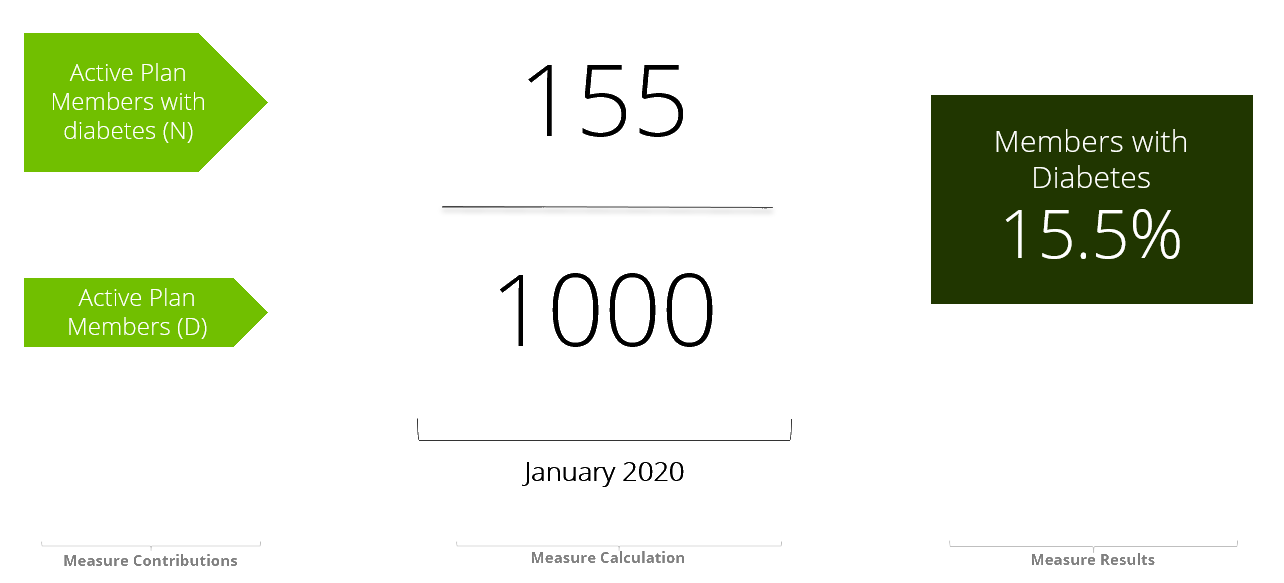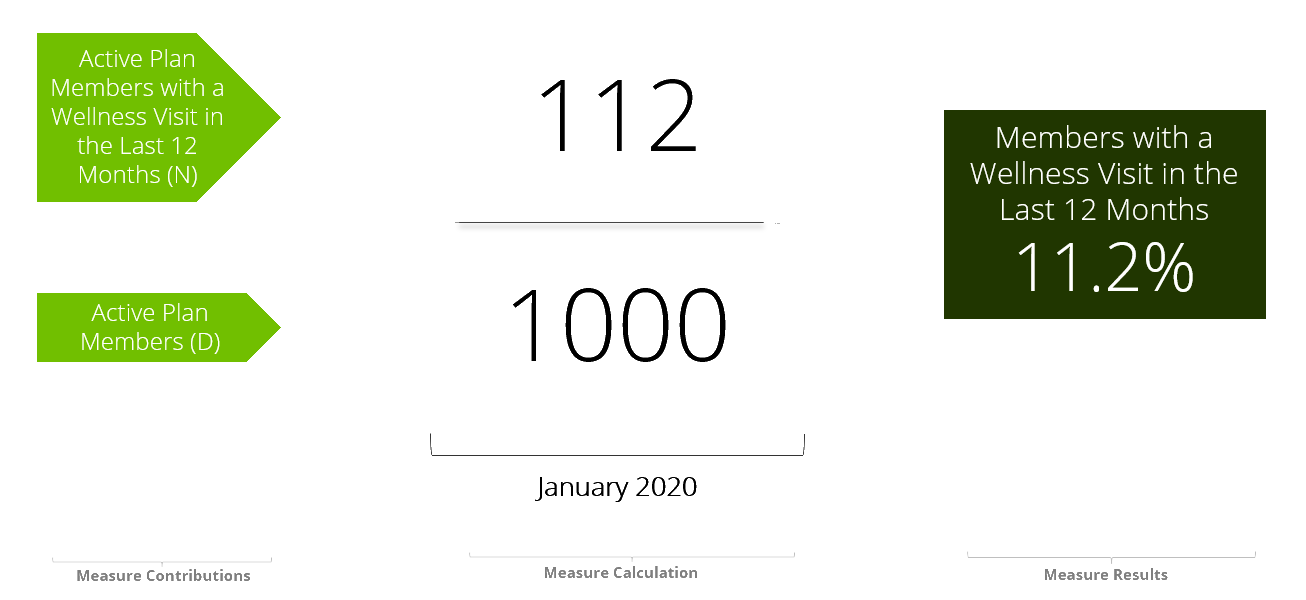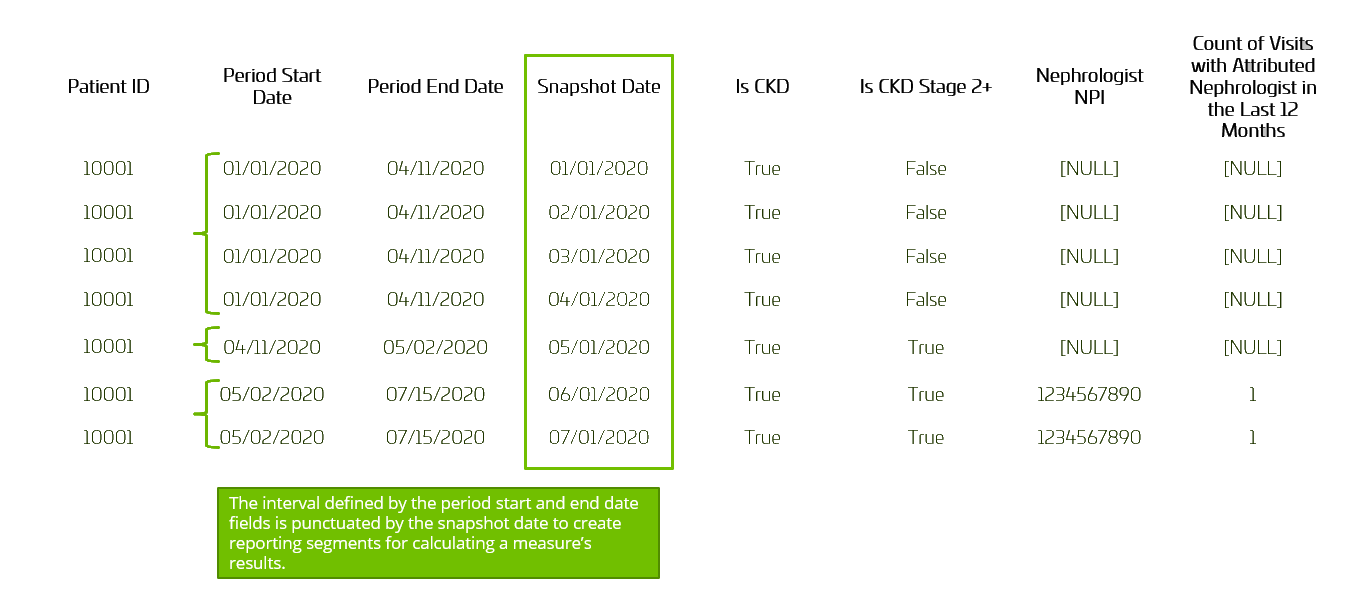Templates for creating entity-denominated performance measures in Ursa Studio
There are four tools for easily creating entity-denominated performance measures in Ursa Studio.
- The first tool to utilize when creating a new measure is to see if there is an existing measure that can be cloned.
- The second tool is the Entity D with Single Past Instance of Event N template. This template is appropriate for measures where the opportunity for performance can be represented as an entity (Entity D) and performance can be assessed based on the existence, timing, and/or characteristics of a single previous event (Event N).
- The third tool is the Entity D with Multiple Past Instances of Event N template. This template is appropriate for measures where the opportunity for performance can be represented as an entity (Entity D) and performance can be assessed based on the existence, timing, and/or characteristics of one or more previous events (Event N).
- The last tool is the Singleton Entity D template. This template is appropriate for measures where the opportunity for performance can be represented as an entity (Entity D) and performance can be assessed based on the properties of that same entity.
Key specifications for entity-denominated measures
The key specifications for entity-denominated measures can be reviewed with the context that measure properties are divided into structural panels. Here we are representing three common structural panels and the consideration to the denominator base object.
Denominator Base Object
- Entity-denominated measures use timelines objects, like the [DM/URSA-CORE] Data Mart for URSA-CORE Patient Timelines, for their denominator base objects
Configuration
- Temporal Structure: Entity
- Denominator Case Effective Start Date: Period Start Date
- Denominator Case Effective End Date: Period End Date
- Component Class: Entity measures can be normal form or long form. The Entity D with Single Past Instance of Event N template is used for normal-form measures. The Entity D with Multiple Past Instances of Event N template is used for long-form measures.
Numerator-Denominator Relationship
- Foreign Key: The numerator stack’s Patient ID = the denominator stack’s Patient ID
- Keep In Interval: Keep only rows where the event date is between x days prior to the snapshot date and y days prior to the snapshot date
- Keep Nth Preceding Reference Date: Among instances of this object that share the same patient keep only one record ordered by numerator event date 0 days prior to snapshot date
- This pattern is used only when the measure’s component class is normal form
Numerator and Denominator Contributions
- Numerator Contributions
- Case Is Null
- Case When
- Value of Field
- Denominator Contributions
- One Per Case
Common types of entity measurements
Entity measures typically come in one of the two following varieties:
- The first are measurements of an attribute of an entity. For example, the measure "among active plan members, the percentage of those with diabetes" measures the rate of entities with the attribute of a diabetes diagnosis.
- The second are measurements of an entity’s participation in an event. For example, the measure "among active plan members, the percentage of those with a wellness visit in the last 12 months" measures the rate of entities who participated in a specific event.
Example: Percentage of patients with diabetes

In this example we'll look at an entity measure that identifies the percentage of patients with diabetes. In this case, our denominator observations are each record in the denominator object represents an active plan member. There are one thousand active plan members that qualify in January 2020 (or during a single reporting period), Among those one thousand, the number of those active plan members who have a diabetes diagnosis was 155. The measure result for the January 2020 reporting period is 15.5%, which is produced by dividing the numerator by the denominator.
Example: Active plan members with a wellness visit in the last 12 months

In this example we'll look at an entity measure that identifies the percentage of members with a wellness visit in the last 12 months. In this case, our denominator observations are each record in the denominator object represents an active plan member. There are one thousand active plan members that qualify in January 2020 (or during a single reporting period), Among those one thousand, the number of those active plan members who had at least one wellness visit in the past 12 months was 112. When we divide members with a wellness visit by all active plan members, we get a rate of 11.2% for the January 2020 reporting period.
Example timelines object used in entity-denominated measure results

When creating entity measures, timelines objects are used to determine when members or patients meet denominator inclusion criteria. This table shows three timeline periods for a single patient. We can see those three periods by reviewing the period start and end date columns. The Period Start Date and Period End Date fields represent the beginning and ending of an interval when the patient’s state, as defined by the fields included on the timelines object, did not change. These fields are generated when a timelines object is created. Please note, Ursa Health’s date standard concerning intervals is to is inclusive of the interval’s start date and exclusive of the interval’s end date. In this example, three periods span across seven reporting segments January to July 2020. We can see the date each of those reporting periods begins in the snapshot date column. The snapshot date is imposed on the data in the timelines object to create recurring reporting periods. For example, the first timelines period has four snapshot dates imposed because the timelines period, which remember represents the distinct state of the patient during that period, spans across four snapshot dates. All entities meeting the denominator inclusion criteria on a snapshot date are included in the denominator count.